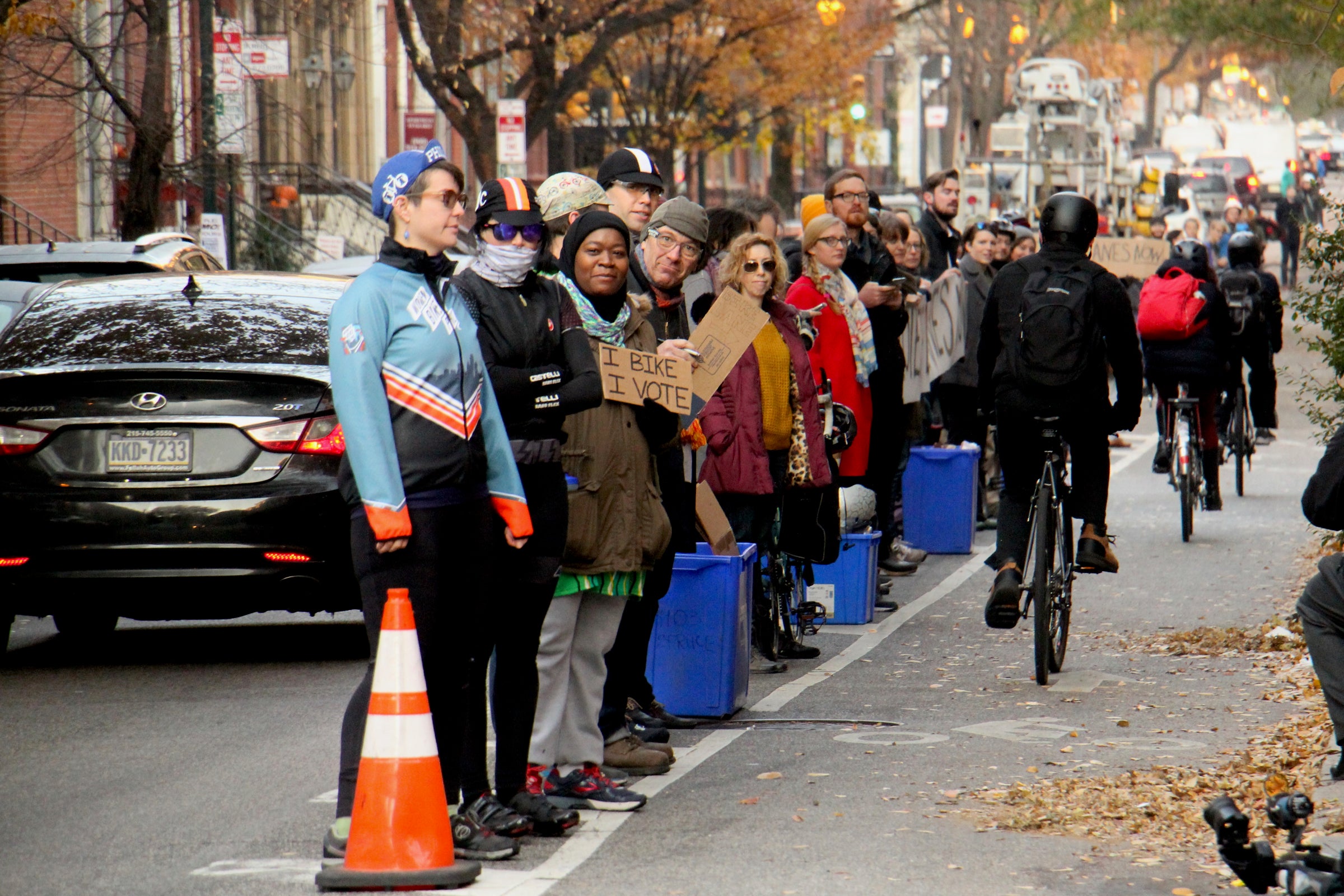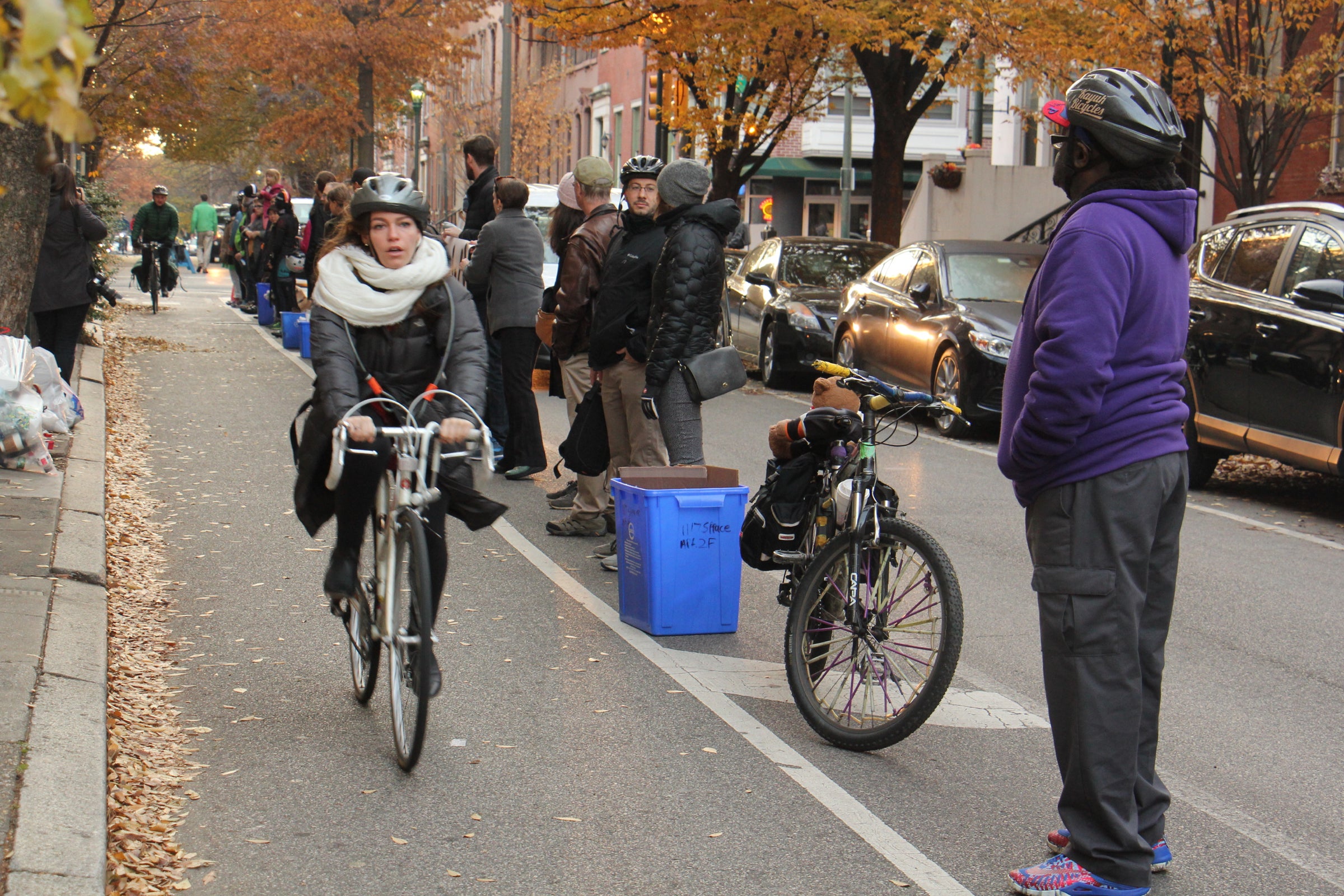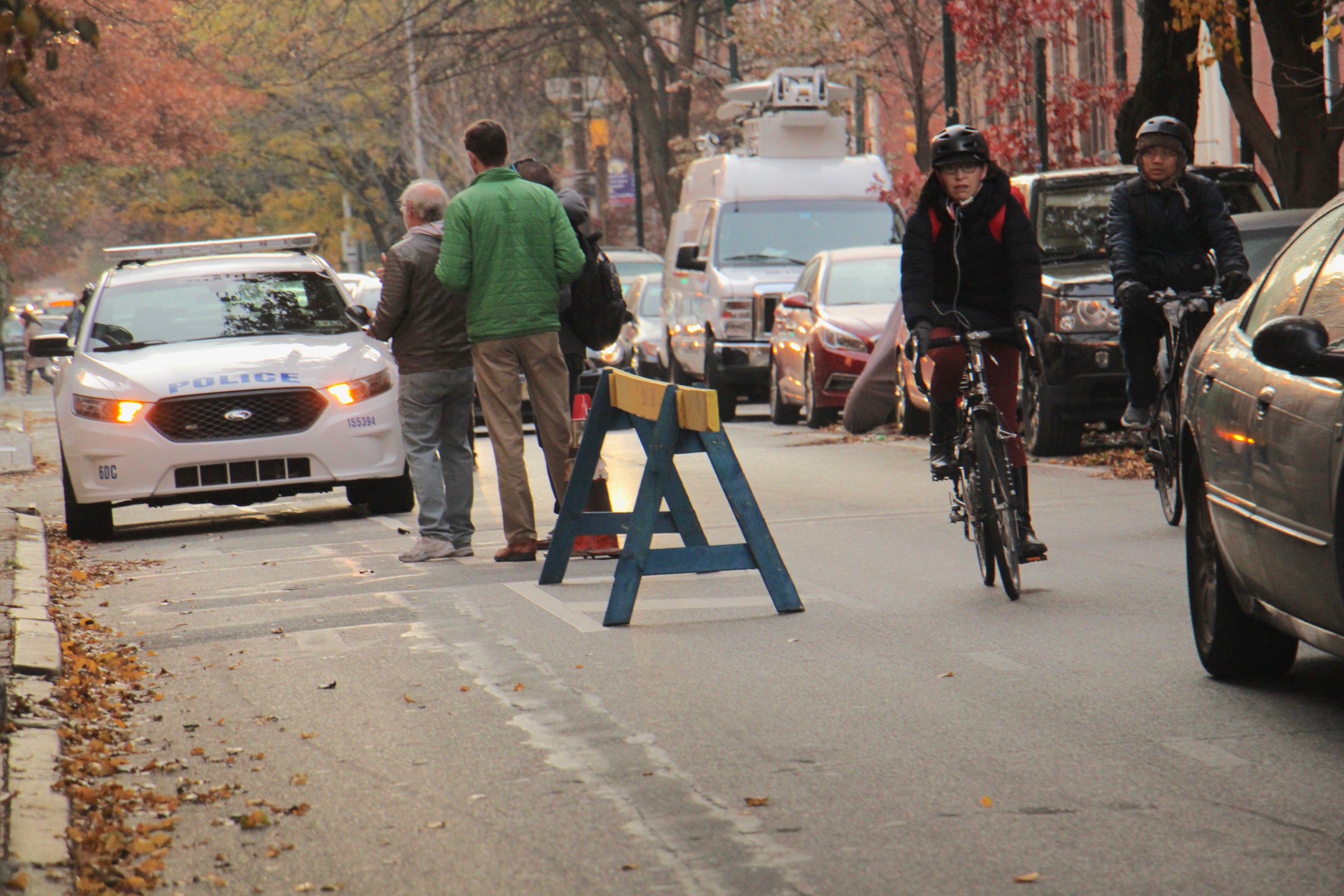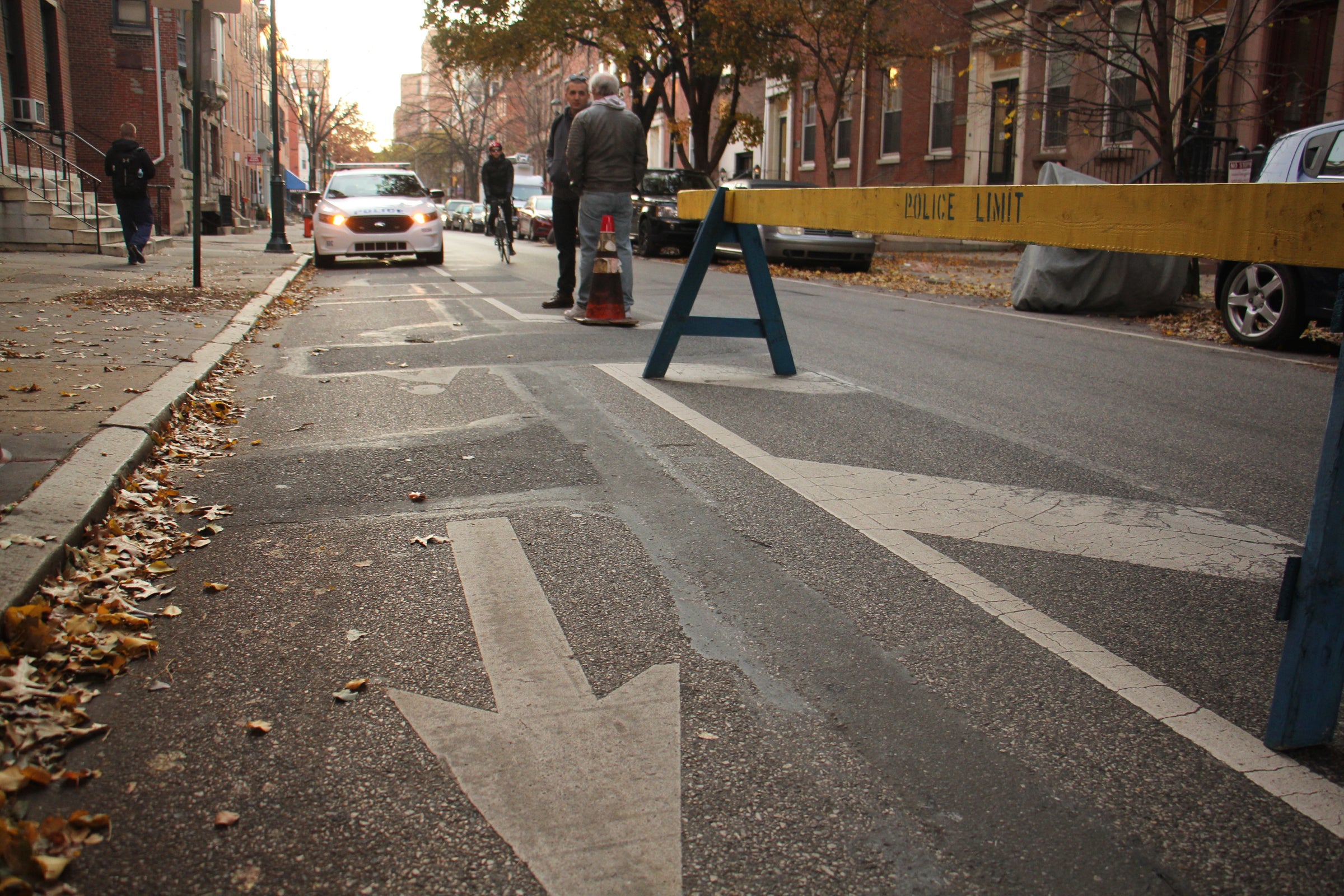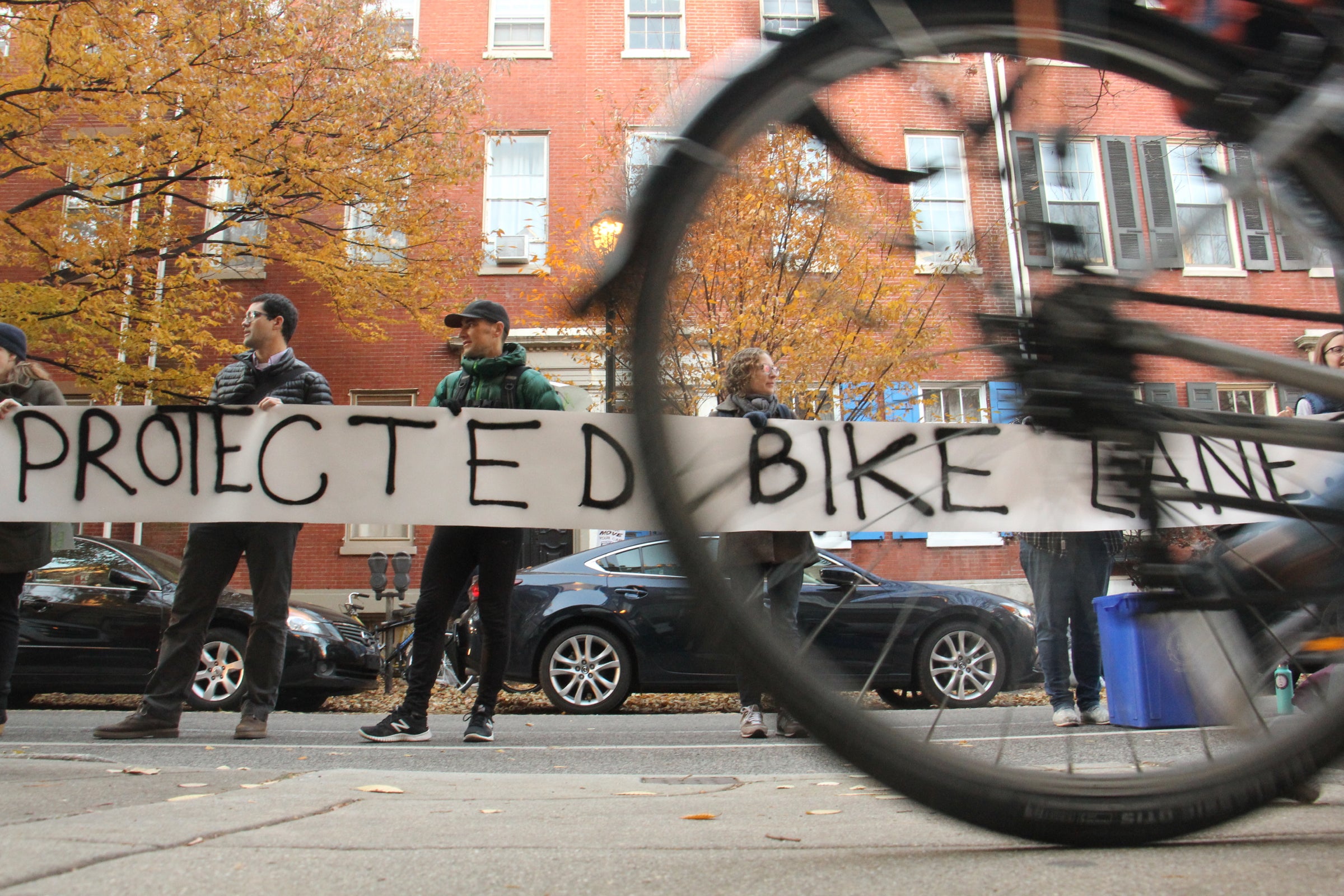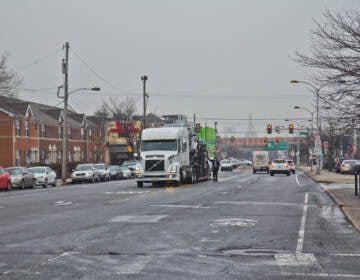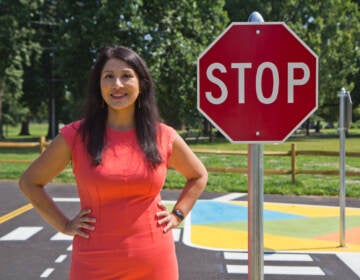After cyclist’s death, protesters form “human-protected bike lane” to demand long-delayed street safety improvements
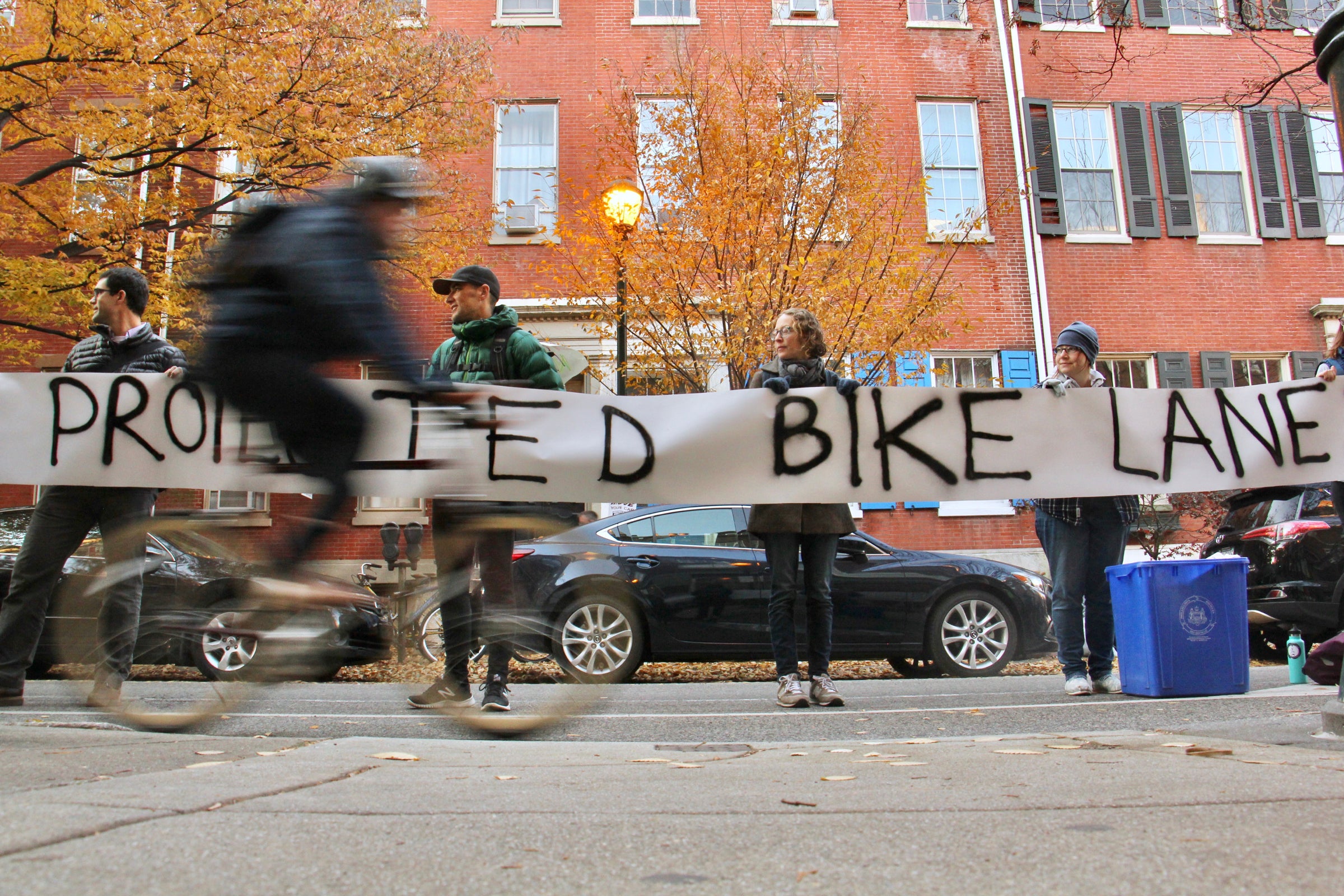
Around 100 cyclists and traffic safety activists formed a human bike lane this morning near the site where a 24-year-old cyclist was struck and killed by a privately operated garbage truck the day prior.
The deceased cyclist, identified as South Philadelphia resident Emily Fredricks, was travelling west in the bike lane on Spruce Street when the trash hauler, also heading west on Spruce, turned right onto 11th Street, hitting her. The bike lane, located on the right side of Spruce Street, is badly faded near the intersection. Police say the investigation is still underway and that the unidentified driver is cooperating with investigators.
Philadelphia won federal grants last spring to improve and expand the city’s bicycle infrastructure, including a proposal to upgrade the painted bike lanes on Spruce and Prince streets by adding physical barriers, such as flexible plastic delineator posts. Officials from the Office of Transportation and Infrastructure Systems discussed the proposal at a community meeting last December, where they were met with voluble opposition from some local residents, who complained about losing the ability to load and unload cars directly in front of their homes and businesses.
The lanes were never upgraded and now a young woman is dead.
She was the 77th traffic fatality in Philadelphia this year, and the third cyclist killed, according to the Bicycle Coalition of Greater Philadelphia.
Mayor Jim Kenney has committed Philadelphia to “Vision Zero,” a policy which considers traffic fatalities preventable: They’re crashes, not accidents, which can be stopped through better traffic enforcement, education, and streetscape infrastructure. In September, the city released a three-year Vision Zero action plan to reduce traffic deaths to zero by 2030.
Despite the plans and pledges, traffic safety advocates have grown increasingly impatient with the city’s implementation. On Wednesday morning, the linear crowd alternated between chants of “City Council — protect our rights,” and “What do we want? Protected bike lanes! When do we want them? Now!”
“I’m here standing with other bicyclists to call upon the city and city council to take every step possible to increase the protection of these bike lanes — these are the city’s most biked bike lanes — and to better protect the entire bike lane network as part of their pledge to eliminate deaths by 2030 as part of Vision Zero,” said Sarah Clark Stuart, executive director of the Bicycle Coalition.
“More can be done, and should be done, to protect bicyclists, pedestrians and motorists,” said Stuart. Stuart called on the city to build more bike lanes, restripe the faded bike lanes across the city, and to protect more bike lanes with delineator posts or other physical separators. “These lanes need to be upgraded and updated, and we want to find a way to do that as soon as possible,” she said.
A spokesman for the city called the crash a “tragedy,” and said that the city had scheduled the Spruce Street bike lane for repainting “next month.”
In a grim irony, the demonstration, which stretched from 11th Street to 13th, temporarily made things worse for cyclists biking down Spruce as part of their regular day. A Philadelphia Police unit dispatched to monitor the peaceful protest parked near 10th Street on Spruce — in the bike lane. That forced cyclists to merge into automobile traffic. Then, as they came upon the large demonstration, many confused cyclists avoided the human-buffered bike lane, unaware it was assembled to protect them.
Jeffrey Sidelsky biked by the site of the crash yesterday, just minutes before it occurred. He returned this morning unaware of the planned demonstration. “I’m glad they have something in remembrance,” he said. The South Philadelphia resident bikes the route most mornings on his way to the Starbucks on 12th and Walnut streets, preferring the “faster, easier, money-saving” bike ride over taking SEPTA.
“The people of Philadelphia who drive cars, trucks — any kind of vehicle — need to share the road with cyclists,” he said. “They’re too aggressive — it’s not just for them.”
Dear reader, please help protect PlanPhilly’s independent, unbiased existence. We depend on your support to continue providing the local public interest news that you value next year. This giving season, please make a tax-deductible donation during our once-a-year membership drive. Thank you for eleven great years of watchdog coverage and counting!
WHYY is your source for fact-based, in-depth journalism and information. As a nonprofit organization, we rely on financial support from readers like you. Please give today.



